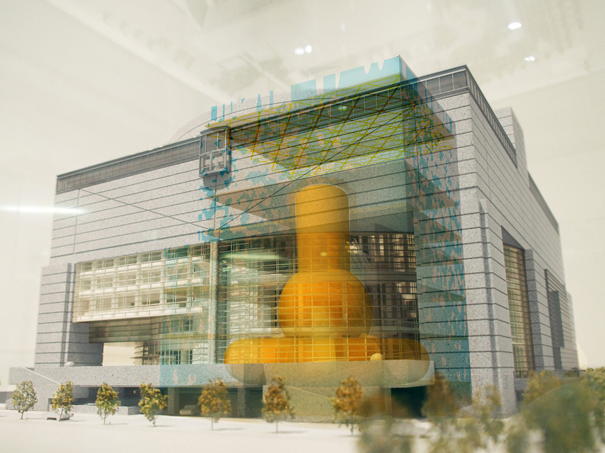Born 1961 in Hyogo Prefecture (Japan), based in Hyogo Prefecture.
Miyamoto first attracted notice for altering and strengthening his family home - slated for complete demolition (zenkai) following the Great Hanshin - Awaji Earthquake - to give it a new lease of life as "ZENKAI House." For the Japan pavilion at the 1996 Venice Biennale of Architecture, in which he took part along with practitioners including Arata Isozaki and Ryuji Miyamoto, Miyamoto brought in rubble from the quake-hit region for a display on the theme of "fracture" that earned him a Golden Lion. In his book Kankyo noizu wo yomi, fuukei wo tsukuru (Create Landscape By Reading Environmental Noise Elements) he offers a view of architecture not as a stand-alone discipline but incorporating the whole environment including topography, historical elements, and infrastructure; a way of seeing things in part cultivated from his experience as a mountain climber. For the competition to design the priest's quarters at the Chushin-ji temple, he advocated a concept by which a large concrete roof would remain for a hundred years even if the space took on a different role, and was chosen as the architect for the project, eventually bringing it to fruition. In the wake of the Great East Japan Earthquake Miyamoto headed swiftly for the disaster zone and began to assist with recovery operations, taking clues from memories. His proposals include a "foundation town" of flower beds planted in towns from which the wooden houses have been swept away leaving only concrete foundations; an idea borrowing from a suggestion he made after the Great Hanshin - Awaji Earthquake of using rubble to build the Unosumai River mouth systems tract, a landform acting as a tidal barrier; and a "Fukushima No. 1 Power Station Shrine" featuring a traditional Japanese-style roof over the reactor housing.

|
《Fukushima Dai-ichi Sakae Nuclear Plant》 2013 ©Katsuhiro Miyamoto |





